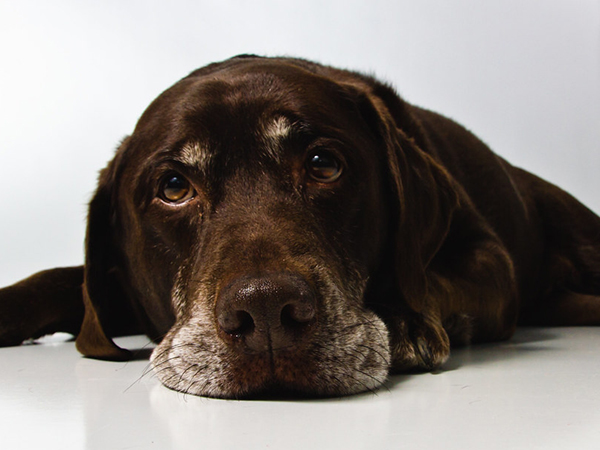Ways to Deal with Dog Separation Anxiety
|
Mar 13, 2024 - By the dedicated team of editors and writers at Newsletter Station.

|
Dogs are known for their loyalty and companionship, often forming strong bonds with their owners. However, this strong attachment can sometimes lead to a condition known as dog separation anxiety. When left alone, dogs with separation anxiety can become distressed, anxious, and exhibit destructive behavior.
Fortunately, so various strategies and techniques can help you and your furry friend cope with this common issue. This blog post will explore several ways to deal with dog separation anxiety.
- Gradual Departures and Arrivals
One effective method to tackle separation anxiety is to make your comings and goings less predictable and less of an event. Dogs often become anxious when they anticipate your departure or arrival. Start by practicing short departures and arrivals, gradually increasing your time away from your dog. This desensitizes them to the routine and helps reduce anxiety over time.
- Create a Safe Space
Provide your dog with a safe and comfortable space to retreat when you're not around. This can be a crate, a designated room, or an area with their bed and toys. Make this space a positive and relaxing environment so your dog associates it with comfort rather than anxiety.
- Consistent Routine
Dogs thrive on routine and predictability. Try to maintain a consistent schedule for feeding, walking, and playtime. Consistency can help your dog feel secure and reduce anxiety when you're not home.
- Exercise and Mental Stimulation
Ensure your dog gets plenty of exercise and mental stimulation before you leave. A tired dog is more likely to rest and relax during your absence. Engage in activities like fetch, puzzle toys, or obedience training to tire them out physically and mentally.
- Counterconditioning
Counterconditioning involves changing your dog's emotional response to your departure cues. Gradually associate these cues (such as picking up keys or putting on shoes) with positive experiences, like giving treats or toys. This can help your dog form positive associations with your departures.
- Desensitization
Desensitization involves exposing your dog to short periods of separation and gradually increasing the duration over time. Start by leaving your dog alone for a few minutes and gradually extending the time. This process can help your dog build confidence and reduce anxiety.
- Seek Professional Help
If your dog's severe separation anxiety is not responding to home-based strategies, it may be time to consult a professional dog trainer or veterinarian. They can offer more specialized advice, recommend necessary medications, or suggest behavioral therapy to address the issue.
- Consider a Companion
If feasible, consider getting another dog as a companion for your anxious dog. Having a furry friend to keep them company can alleviate some of their anxiety, provided both dogs get along well.
- Use Pheromone Diffusers
Pheromone diffusers emit synthetic dog pheromones that mimic the ones a mother dog produces to comfort her puppies. These can create a soothing environment and reduce anxiety in some dogs.
- Be Patient and Understanding
Dealing with dog separation anxiety can be challenging and requires patience and understanding. Avoid scolding your dog for their anxious behavior, which can worsen the problem. Instead, offer support, love, and positive reinforcement for calm behavior.
Dog separation anxiety is a common issue that can be distressing for both dogs and their owners. However, with the right strategies and techniques, you can help your furry friend overcome their anxiety and lead a happier, more relaxed life. Remember that every dog is unique, and it may take some trial and error to find the best approach for your specific pet.
By combining the abovementioned methods and seeking professional guidance when needed, you can improve your dog's separation anxiety and strengthen your bond with your beloved companion.
Unlock the Power of Email Marketing
Harness the potential of email marketing with Newsletter Station. Reach your target audience, drive conversions, and achieve your business goals.
|
More Blogs
| Apr 24, 2024 |
How to Know When It Is Too Hot to Walk Your Dog
|
| Apr 17, 2024 |
What to Do When Your Pet Isn't Eating
|
| Apr 10, 2024 |
What Causes Bad Breath in Dogs and Cats?
|
| Apr 3, 2024 |
What Causes Cysts in Dogs: Understanding Canine Cyst Formation
|
| Mar 26, 2024 |
Toxic Plants for Cats: Protecting Your Feline Friends
|
| Mar 20, 2024 |
Reasons Your Dog Is Licking Its Paws
|
| Mar 13, 2024 |
Ways to Deal with Dog Separation Anxiety
|
| Mar 6, 2024 |
Identifying Food Allergies in Dogs and Cats
|
| Feb 28, 2024 |
Spotting the Early Signs of Dementia in Your Aging Dog
|
| Feb 21, 2024 |
How Safe is Pet Hair Dye?
|
| Feb 14, 2024 |
Why Enrichment is Critical for a Cat or Dog
|
| Feb 7, 2024 |
Unraveling the Mystery: The Causes of a Cough in a Dog or Cat
|
|
|